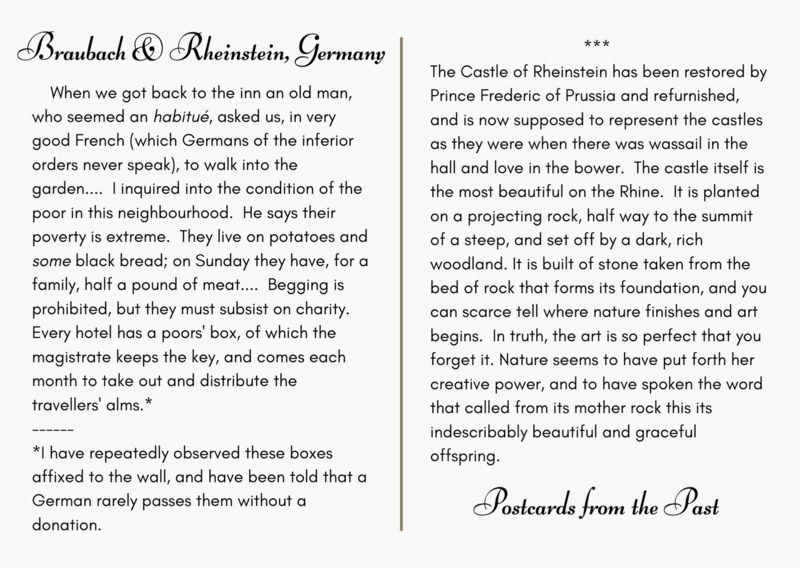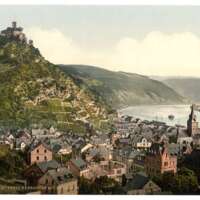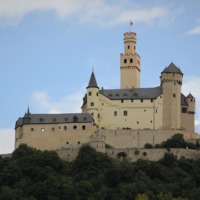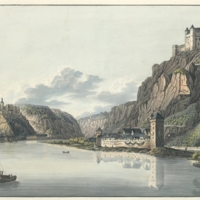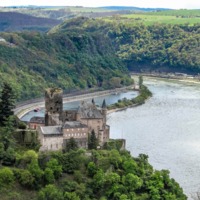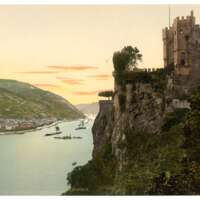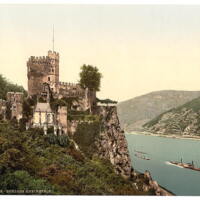Instagram Post of November 10, 2020:
Today’s quote from Catharine Maria Sedgwick dates back to August 1839, which is the same month that the invention of the daguerreotype was publicly announced and ushered in the age of photography. As you can see from her letter detailing her travels on the Rhine River, Catharine was still thinking in terms of how a painter would have approached the German landscape:
“I will not even name to you the beautiful pictures past which we floated. Everything is here ready for the painter’s hand…. Villages, vineyards, and ruins appeared and disappeared, as the mist, playing its fantastic tricks, veiled and unveiled them. As we drew near Bingen the sun shone out, throwing his most beautifying horizontal beams on Rheinstein and other famed points on the landscape, while masses of black clouds, driven on by the gusty wind, threw their deep shadows now here, now there, as if (we flies on the wheel fancied) to enchant the senses of travellers for the picturesque.”
For more excerpts from Catharine’s travelogue and pictures of the various castles that Catharine saw on this leg of her journey, check out today’s Postcards from the Past #11 Facebook post at https://www.facebook.com/awomanofthecentury.
Facebook Post of November 10, 2020:
Catharine Maria Sedgwick’s family arrived in Wiesbaden, Germany on July 26, 1839, and spent the month of August there waiting for good weather to cruise the area now known as the Rhine Gorge, Middle Rhine, Rhine Valley, Romantic Rhine, or a UNESCO World Heritage Site. The natural beauty of the landscape dotted with over 40 castles and fortresses has long inspired artists, writers, and composers, and Catharine was not immune to its charms.
Catharine’s letters explain that a steam navigation company had three boats ascending and descending the river daily like a shuttle, which allowed them to get on and off for land excursions without being stranded. They took the steamer about fifty miles down the Rhine to Braubach, Germany for a donkey ride up a winding road to the Castle of Marksburg (compare 1890 and 2012 images).
Their next stop was St. Goar’s to see the Maus and Katz Castles (Mouse and Cat) (compare 1850 and 2017 images of Katz castle) and tour the Rheinfels and Rheinstein Castles (see 1890 images of the Rheinstein Castle). In the images, you can see Catharine’s description of the exterior of the Rheinstein Castle. If you're curious to see what the trip looks like today, check out this 2-minute Viking River Cruises video at
https://youtu.be/ZmIq08eSRAY.
Catharine’s travelogue, however, was about more than just her impressions of the German landscape. Her letters describe visits to a German girls’ public school as well as an “infant-school,” or daycare. As a part-time teacher, Catharine was naturally interested in the German educational system, but her letters also display her interest in social issues involving the poor. Check out her letter in the images to see what her Braubach innkeeper told her about the role of travelers’ alms in German hotels.
